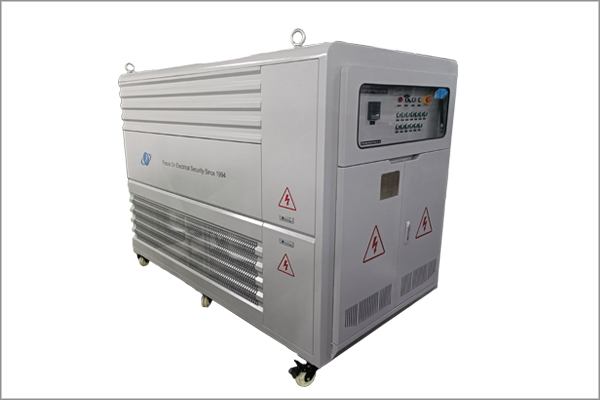In the modern power system, the load bank, as the key test equipment, undertakes the important mission of ensuring the safe and stable operation of the power grid. From the power generation side to the power side, from traditional thermal power to new energy grid connection, the load bank provides indispensable technical support for the performance verification of power equipment and the stability analysis of the power grid by simulating the real load and fault scenario. This paper will deeply discuss the core value of load bank in power system, and analyze its application practice in stability testing and fault simulation with specific cases.

1000kW load bank
First, the core tool of power system stability test
The stability of power system is directly related to the reliability of power supply. Load banks help engineers evaluate the dynamic response of generators, transformers, relays and other equipment by accurately simulating load characteristics under different operating conditions.
1. Voltage stability test
Scenario simulation: By adjusting the power factor of the load bank, simulate the effect of inductive or capacitive load on the grid voltage. For example, when a large motor is started, the load bank can simulate instantaneous reactive power shocks and test the voltage regulation ability of the generator.
Case: In the commissioning of a new unit of a thermal power plant, a load bank was used to simulate 100% active load + 80% reactive load, successfully verifying the recovery ability of the excitation system when the voltage dropped, ensuring that the voltage fluctuation of the grid after the unit was connected to the grid was controlled within ±2%.
2. Frequency stability test
Technical implementation: The load bank can quickly switch the load power and simulate the frequency mutation of the power grid (such as sudden load rejection or access to high-power equipment). For example, the step load test verifies that the speed control system of the generator set can limit the frequency deviation within the range of ±0.5Hz within 50ms.
Data support: A provincial power grid uses a load bank to complete the frequency response test of the whole network, and establishes a frequency stability model including 2000 + nodes, which provides a key parameter basis for power grid dispatching.
Second, fault simulation: from a single fault to a complex scenario
Power system faults are diverse and sudden. The load bank helps engineers reproduce real fault scenarios and optimize protection strategies by accurately controlling fault parameters.
1. Simulate typical faults
Short circuit fault: The load bank can trigger a three-phase short circuit at the specified phase Angle, simulate the line fault current (such as 10kA short circuit current lasts 0.1 seconds), test the breaking ability of the circuit breaker and the operation time of the relay protection device.
Island effect: In the microgrid test, the load bank simulates the distributed power island operation state by suddenly disconnecting the grid connection, and verifies the frequency/voltage autonomous regulation ability of the inverter.
2. Complex fault chain test
Chain failure simulation: The load bank can series multiple fault modules to reproduce the chain reaction of "equipment failure → protection misoperation → system collapse". For example, a substation simulates the whole process of main transformer overload → differential protection rejection → bus voltage loss through the load bank, and finds the timing defect in the protection configuration.
Extreme condition test: In the new energy grid-connected scenario, the load bank can superimpose environmental stresses such as temperature (-40℃~85℃) and humidity (95%RH) to test the fault tolerance of the inverter under extreme conditions.
 2024-09-11
2024-09-11 2023-04-21
2023-04-21 2023-04-06
2023-04-06 2022-05-05
2022-05-05 2022-05-05
2022-05-05

